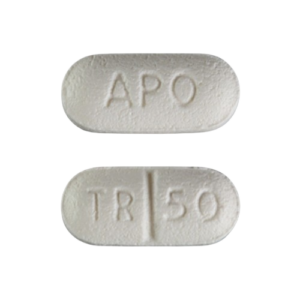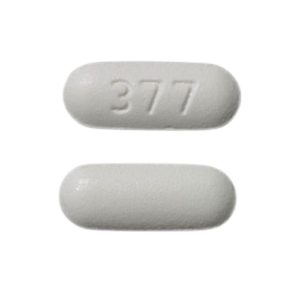Need Help? Chat Online or Toll Free: +1 315-897-3886
New Customers get 10% off using code:CDD10NEW at checkout. Maximum $100 discount.
Gabapentin is a medication primarily used to treat epilepsy and neuropathic pain. It belongs to the class of drugs known as anticonvulsants, which work by decreasing abnormal activity in the brain. Originally approved by the U.S. Food and Drug Administration (FDA) in 1993, Gabapentin has since gained widespread use for various conditions beyond epilepsy, including neuropathic pain, anxiety disorders, and certain types of restless leg syndrome.
1. Uses of Gabapentin:
Gabapentin is prescribed for several medical conditions, including:


2. Side Effects of Gabapentin:
While Gabapentin is generally well-tolerated, like any medication, it can cause side effects. Common side effects may include:
a. Dizziness: Gabapentin can cause dizziness, which may increase the risk of falls, particularly in older adults. It’s important to avoid activities that require mental alertness, such as driving or operating machinery, until you know how Gabapentin affects you.
b. Drowsiness: Some individuals may experience drowsiness or sedation while taking Gabapentin. This side effect is more common when starting the medication or when the dosage is increased.
c. Fatigue: Gabapentin can cause fatigue or tiredness, which may impact daily activities. It’s essential to get an adequate amount of rest while taking Gabapentin.
d. Nausea and Vomiting: Nausea and vomiting are possible side effects of Gabapentin, particularly when first starting the medication. Taking Gabapentin with food or dividing the daily dose into smaller doses can help reduce gastrointestinal side effects.
e. Weight Gain: Some individuals may experience weight gain while taking Gabapentin. Monitoring food intake and engaging in regular physical activity can help manage weight changes.
f. Peripheral Edema: Peripheral edema, or swelling of the extremities, is a less common side effect of Gabapentin. It’s essential to monitor for signs of swelling, particularly in the hands, feet, or ankles, and report any concerns to a healthcare provider.
g. Mood Changes: In some cases, Gabapentin may cause mood changes, including irritability, agitation, or depression. It’s crucial to report any significant changes in mood or behavior to a healthcare provider promptly.
h. Suicidal Thoughts or Behavior: Although rare, Gabapentin may increase the risk of suicidal thoughts or behavior, particularly in individuals with a history of depression or other mental health disorders. It’s important to seek immediate medical attention if you or someone you know experiences suicidal thoughts or behavior while taking Gabapentin.
i. Allergic Reactions: Allergic reactions to Gabapentin are rare but can occur. Symptoms of an allergic reaction may include rash, itching, swelling of the face, lips, or tongue, and difficulty breathing. If you experience any signs of an allergic reaction, seek medical attention immediately.
3. How to Consume Gabapentin:
Gabapentin is available in various forms, including capsules, tablets, and oral solution. It is usually taken orally, with or without food, as directed by a healthcare provider. The dosage of Gabapentin depends on the medical condition being treated, the individual’s age and weight, kidney function, and other factors.
a. Epilepsy: The typical starting dose of Gabapentin for epilepsy is 300 mg taken orally once daily on the first day, followed by 300 mg taken orally twice daily on the second day. The dosage may then be increased as needed, with a maximum recommended dose of 3600 mg per day, divided into three doses.
b. Neuropathic Pain: The starting dose of Gabapentin for neuropathic pain is typically 300 mg taken orally once daily on the first day, followed by 300 mg taken orally twice daily on the second day. The dosage may then be increased as needed, with a maximum recommended dose of 3600 mg per day, divided into three doses.
c. Anxiety Disorders: If Gabapentin is prescribed for anxiety disorders, the dosage may vary depending on the severity of symptoms and individual response to the medication. It’s essential to follow the healthcare provider’s instructions regarding dosage and administration.
d. Restless Leg Syndrome: If Gabapentin is used off-label for restless leg syndrome, the dosage may vary depending on the individual’s symptoms and response to the medication. It’s important to follow the healthcare provider’s recommendations regarding dosage and administration.
e. Bipolar Disorder: If Gabapentin is prescribed off-label for bipolar disorder, the dosage may vary depending on the individual’s symptoms and response to the medication. It’s essential to follow the healthcare provider’s instructions regarding dosage and administration.
4. Special Considerations:
a. Renal Impairment: Gabapentin is primarily excreted by the kidneys, so dosage adjustments may be necessary in individuals with renal impairment to prevent the accumulation of the drug in the body. Healthcare providers may adjust the dosage based on the individual’s creatinine clearance or estimated glomerular filtration rate (eGFR).
b. Withdrawal: Abrupt discontinuation of Gabapentin can lead to withdrawal symptoms, including insomnia, nausea, anxiety, and sweating. It’s essential to taper the dosage gradually under the guidance of a healthcare provider to minimize withdrawal effects.
c. Drug Interactions: Gabapentin may interact with certain medications, including opioids, antacids containing aluminum or magnesium, and drugs that affect renal function. It’s essential to inform healthcare providers about all medications, supplements, and herbal products being taken to avoid potential interactions.
d. Pregnancy and Breastfeeding: The safety of Gabapentin during pregnancy and breastfeeding is not well-established. Healthcare providers will weigh the potential risks and benefits before prescribing Gabapentin to pregnant or breastfeeding individuals.
e. Elderly Population: Older adults may be more sensitive to the side effects of Gabapentin, such as dizziness and drowsiness. Healthcare providers may adjust the dosage and monitor for adverse effects more closely in this population.
In conclusion, Gabapentin is a widely used medication for the treatment of epilepsy, neuropathic pain, anxiety disorders, and other conditions. While generally well-tolerated, it can cause side effects, and certain precautions should be taken when consuming it. It’s essential to follow healthcare provider’s instructions regarding dosage, administration, and monitoring to ensure the safe and effective use of Gabapentin. Additionally, individuals should be aware of potential drug interactions, withdrawal effects, and special considerations based on age, renal function, and pregnancy status. As with any medication, it’s important to communicate openly with healthcare providers and report any concerns or adverse reactions promptly.

Experience the ease of managing your health with Onlinedeliveryrx.com Our online platform offers a seamless way to order your medication from the comfort of your home. Trust us for reliable service and timely delivery, ensuring your wellness is always within reach.
Email: support@onlinedeliveryrx.com
Call Us: +1 315 897 3886
909 E. Indigo Ct. Gilbert AZ 85298



